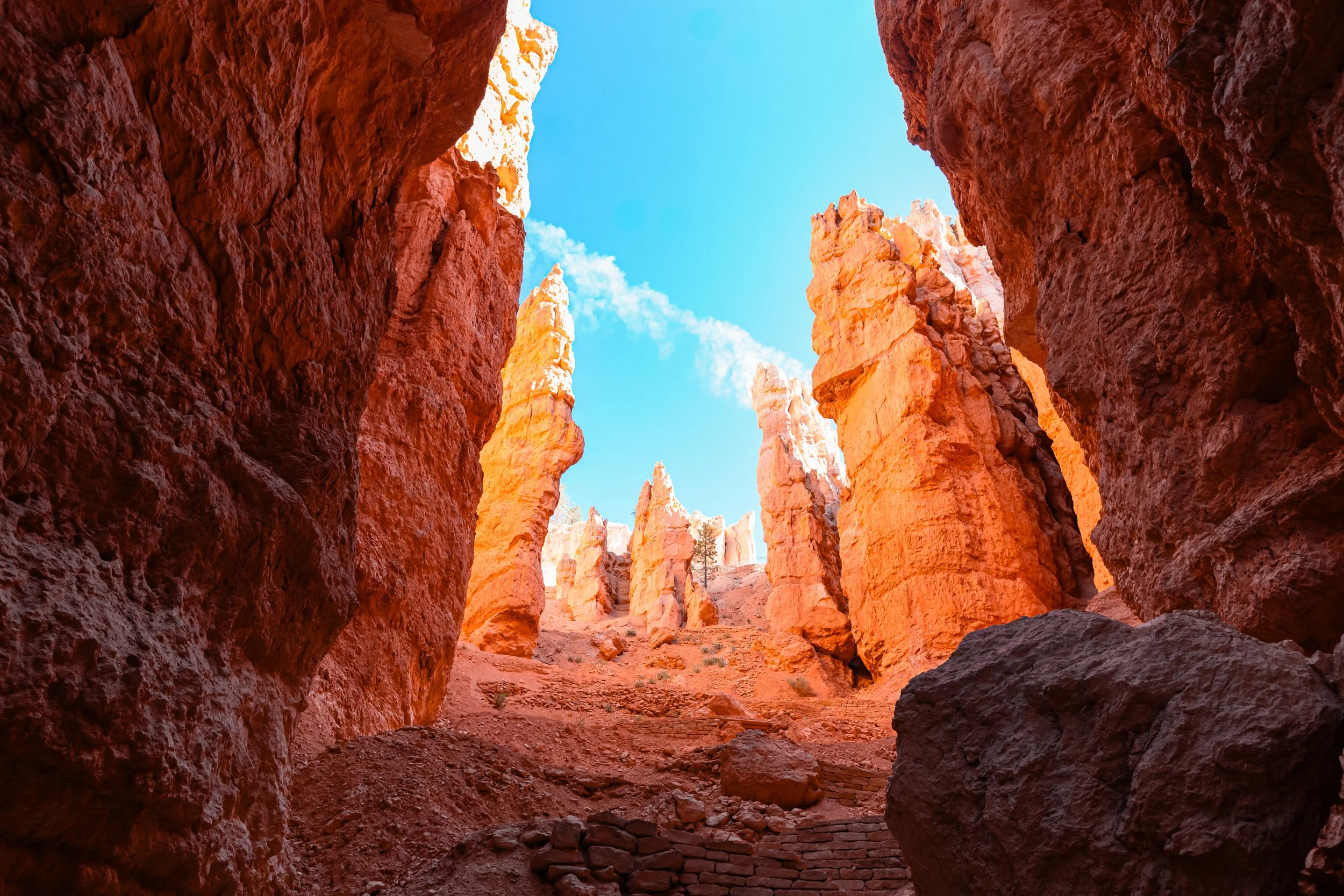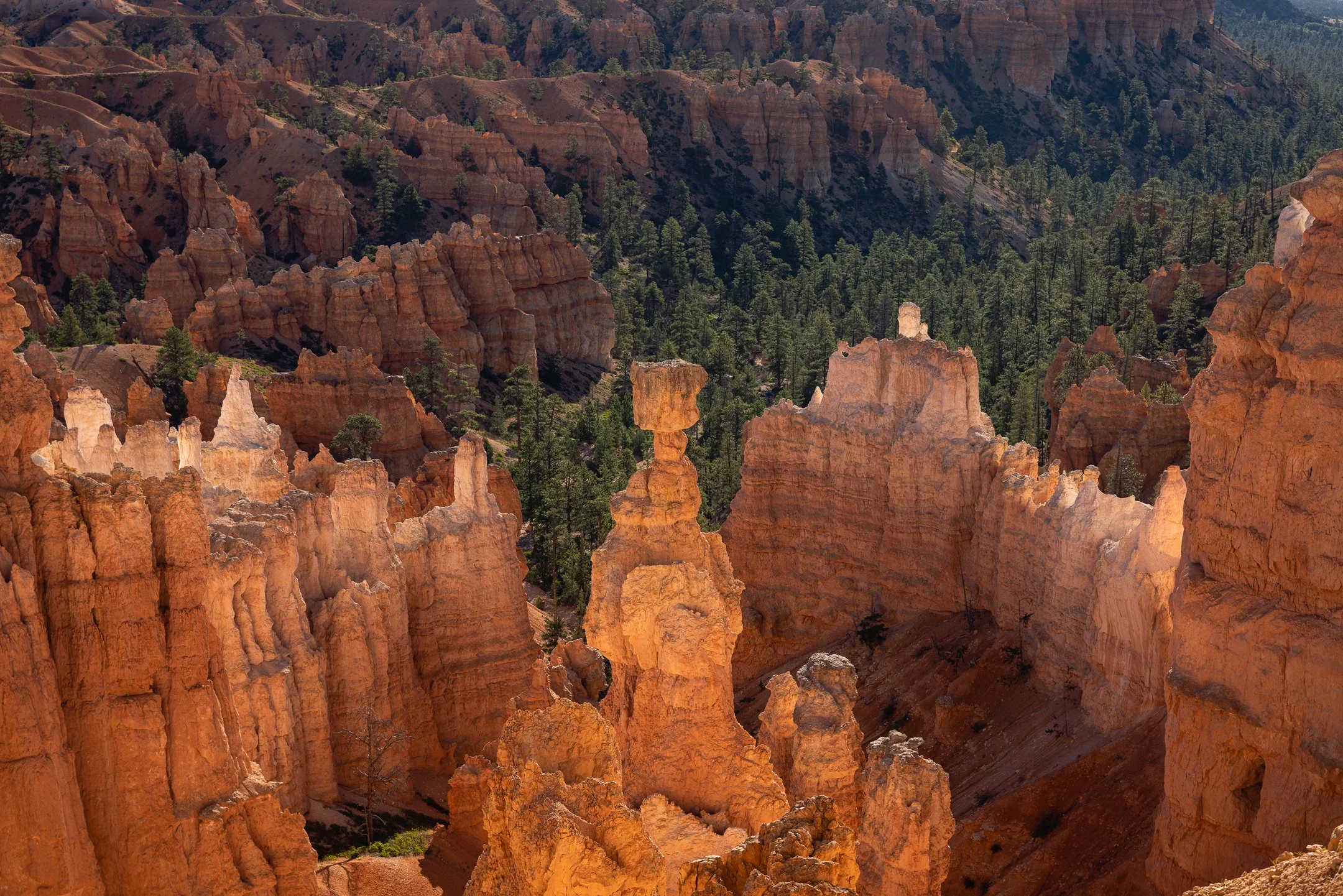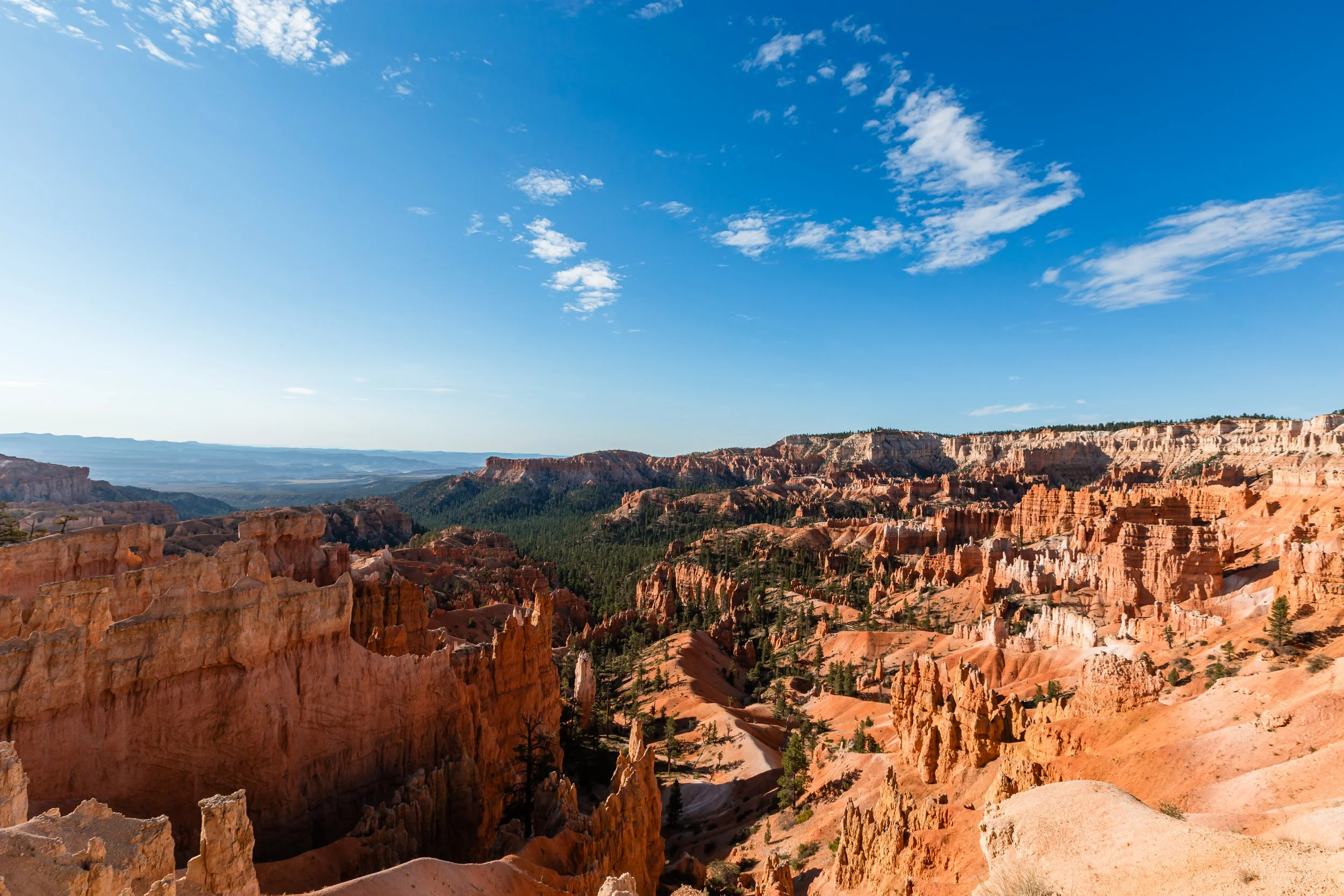Bryce Canyon National Park Facts: Elevation, Hoodoos, and Hiking Trails.
Wall Street Trail, Bryce Canyon National Park by @Maxoutthere
Bryce Canyon National Park is one of Utah’s most photogenic landscapes, famous for its red rock hoodoos, amphitheaters, and vibrant night skies. Whether you’re here for a quick visit or a multi-day hiking trip, knowing a few facts about the park can make your time here even better.
Here’s a guide to Bryce Canyon’s elevation, geology, trails, and stargazing opportunities, all the reason why this park is worth adding to your bucket list.
1. Bryce Canyon’s Elevation Reaches Up to 9,000 Feet
The rim of Bryce Canyon ranges between 8,000 and 9,000 feet (2,438 to 2,743 meters) above sea level. This high altitude brings cooler temperatures in the summer and crystal-clear views year-round. It also means the air is thinner, with about 75% of the oxygen you’ll find at sea level, so it’s smart to pace yourself on hikes.
2. It’s Not Actually a Canyon
Despite its name, Bryce Canyon is a series of natural amphitheaters carved into the Paunsaugunt Plateau. Erosion has shaped the rock into massive bowls and spires that glow in shades of red, orange, and pink.
Sunset Point by by @Maxoutthere
3. Home to the Tallest Hoodoos in the World
Hoodoos are tall, thin rock formations created by millions of years of freezing, thawing, and erosion. At Bryce Canyon, they can reach up to 200 feet high, making them some of the tallest hoodoos on the planet.
4. Over 65 Miles of Hiking Trails
Bryce Canyon offers more than 65 miles of trails, from short scenic walks along the rim to full-day hikes that take you down into the amphitheaters. Popular routes include the Navajo Loop, Queen’s Garden Trail, and Fairyland Loop.
Iconic “Thor’s Hammer” by @Maxoutthere
5. One of the Darkest Night Skies in the United States
Bryce Canyon is an official International Dark Sky Park. On a clear night, you can see up to 7,500 stars with the naked eye, along with a bright, arching view of the Milky Way.
6. Rock Layers Over 60 Million Years Old
The rock formations at Bryce Canyon date back more than 60 million years. Each layer tells the story of changing climates, ancient seas, and the slow geological processes that shaped the region.
Sunrise Point by @Maxoutthere
Why Visit Bryce Canyon National Park
Bryce Canyon’s mix of high elevation, dramatic hoodoos, and unbeatable stargazing make it one of the most unique national parks in the U.S. You can hike among towering red rock spires during the day, then watch the sky fill with stars at night.
Whether you’re visiting for the hiking trails, the photography opportunities, or the chance to see the night sky at its clearest, Bryce Canyon delivers an experience that’s both breathtaking and unforgettable.
Park Entrance Sign by @Maxoutthere
I hope you’re more inspired than ever to visit Bryce Canyon and experience one of my favorite National Parks first hand and if you already have let me know in the comments or reach out to me directly via my contact page or DM me on Instagram to let me know what you enjoyed most about it!
Catch you out there,
— Max






